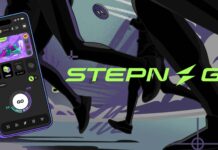[ad_1]
This post was originally published on polkamon

With the upcoming launch of our booster openings on NEO (targeted for Q2 of this year), the Polychain Monsters Dev team faces the challenge of migrating our currently exclusive EVM (Ethereum Virtual Machine)-based application to the (non-EVM) NEO N3 chain.
The goal of this article is to give an insight into the steps that have to be done to migrate our Booster Openings to NEO N3. By nature, this mainly affects the part of our ecosystem that runs on-chain. That’s why we will give a short overview about:
- The smart contracts that we have to migrate to NEO N3
- The reasons why we have to give users a possibility to bridge $PMON to NEO N3, and
- The marketplaces on which Polymon NFTs can be traded on NEO N3
The main smart contracts that the Polychain Monster Booster Openings are based on are the Opener Contract, the fungible Token Contract ($PMON) and the NFT Contract ($PMONC).
While the Opener Contract is a custom smart contract tailored to our needs, the $PMON and $PMONC contracts are implementations of the popular Ethereum standards EIP-20 and EIP-721. These standardized contracts allow a frictionless integration of the $PMON-Token and the Polychain Monster NFTs into the existing DeFi- and NFT-System on EVM-based networks like Ethereum, BSC or Polygon. To guarantee a likewise integrability of the $PMON-Token and the Polymon-NFTs into the ecosystem on NEO N3, we have to follow the most popular standards of the NEO ecosystem for our Token- and NFT-contracts.
These respective standardized contracts on NEO N3 are the NEP-17 (Token) and the NEP-11 (NFT) contracts. In contrast to most EVM-targeting contracts, the contracts for NEO are not written in Solidity but can be written in different languages like C# or Python. Thankfully there are implementations of these contracts in C# provided by the NEO team, which makes the handling easy for our C#-experienced engineers.
The native multi-language support of Neo N3 allows our versatile development team to utilize one of the programming languages they’re already familiar with and love, massively reducing onboarding time for our team and new hires alike.
— Leif Leiser, CEO & Co-Founder
The implementation of the Polychain Monsters Booster Opening on a new chain doesn’t have large effects on the frontend part of our application. The necessary changes are mostly related to the implementation of new wallets that support the NEO N3 chain. The most popular wallets for interaction with NEO N3 seem to be Neon, NeoLine and O3.
It is our belief as a team that the future of crypto blockchains will not be winner-takes-all and that multiple layer one solutions will co-exist based on their various strengths and weaknesses. This was demonstrated when we became the first NFT product to support multiple networks, including Ethereum, Binance Smart Chain and Polygon.
This is why our community is already vastly familiar with the multi-chain existence of $PMON, and a large part has also previously bridged $PMON themselves with the cross-chain bridge. A cross-chain connection of the supplies of $PMON on different chains via bridges guarantees that the market is able to ensure efficient balancing of supply and demand for the $PMON token on their respective networks.
As NEO is a non-EVM network and not yet supported by the cross-chain bridge, we had to look for alternatives and found the popular Poly.Network bridge, which is most likely the bridge that we will use to launch the $PMON token on NEO N3.
Trading is one of the central elements that make collecting NFTs so exciting. That’s why the existence of NFT marketplaces is such an essential requirement for us if we want to launch on a new chain. In the case of NEO N3, the most popular marketplaces are Sky Hut and GhostMarket.
Support Us via our Sponsors
[ad_2]
By: Alexander Ogloza
nftnewstoday.com







